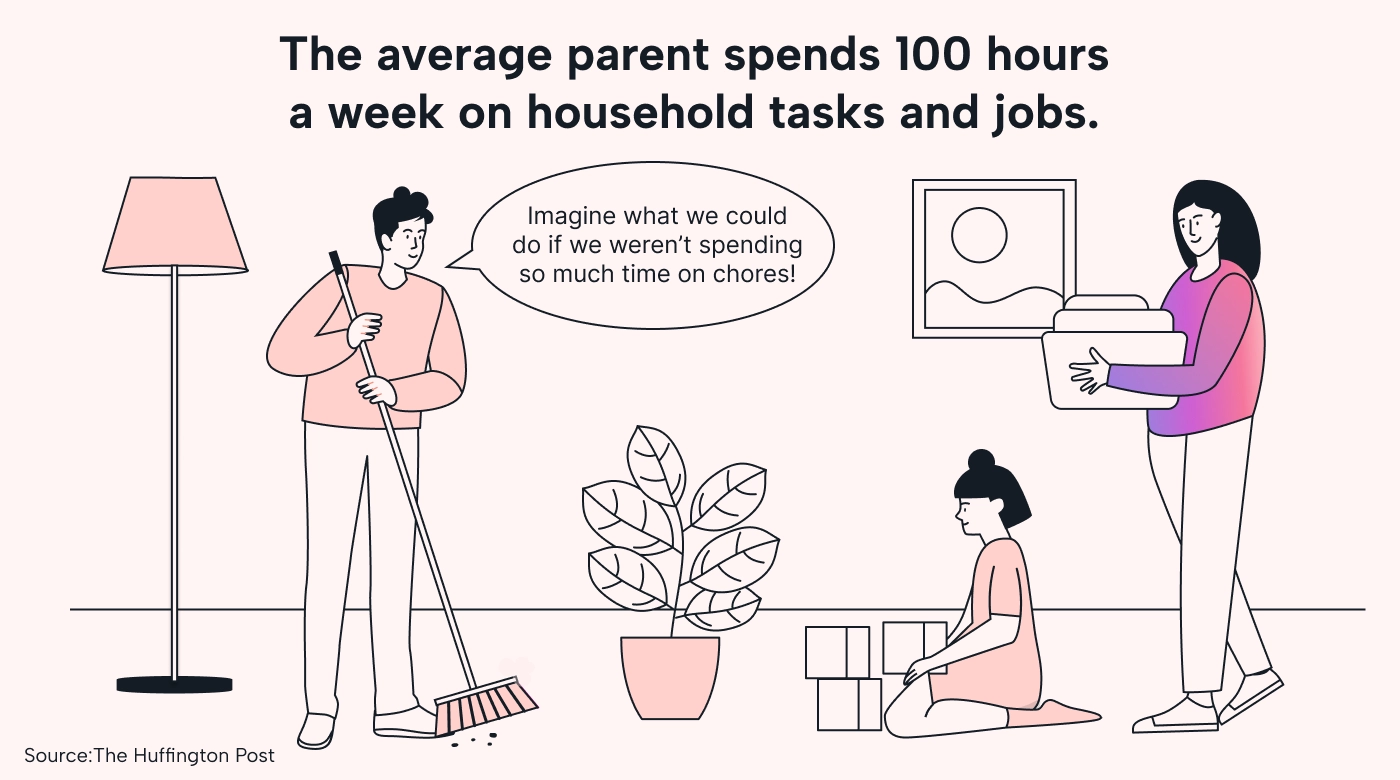Household management

Overview
What is household management?
Household management is the practice of coordinating people, spaces, and resources to run a home effectively. It involves planning schedules, organizing finances, maintaining repairs, and creating routines that keep daily life predictable and safe. Good household management reduces chaos, saves time and money, and supports the well‑being of everyone in the family. It is a continuous process that adapts to changing needs, ages, and circumstances within the home.
Key goals and outcomes
The primary goals are to create a stable living environment, optimize resources, and protect health and safety. Outcomes include lower stress levels, clearer communication, predictable routines, and more opportunities for meaningful family time. Well‑managed households also foster habits like budgeting, proactive maintenance, and collaborative decision‑making, which contribute to longer‑term security and resilience for all members.
Budgeting and Finances
Income tracking
Income tracking starts with listing all regular and irregular sources—from salaries and freelance work to benefits or side gigs. A simple ledger or monthly ledger can capture deposits, tips, and refunds. The goal is to understand net cash flow, anticipate upcoming expenses, and avoid overestimating what is available. Regularly reviewing income helps inform spending limits and saving targets.
Expense tracking
Expense tracking involves recording fixed costs (rent or mortgage, utilities) and variable costs (groceries, fuel, entertainment). Categorize expenses, compare them to a budget, and identify patterns. A monthly review highlights opportunities to cut unnecessary spending, reallocate funds, or adjust expectations. Consistent tracking reduces surprises and strengthens financial confidence for the family.
Saving and debt management
Saving builds a safety net and funds future goals, while debt management focuses on paying down high‑cost obligations. Aim for an emergency fund, then set attainable savings targets for short, medium, and long‑term needs. Use automatic transfers to build consistency, and apply structured repayment strategies (such as avalanche or snowball) to reduce interest costs and regain financial flexibility.
Time, Tasks, and Routines
Building daily routines
Daily routines anchor the day, reduce decision fatigue, and ensure essential tasks get done. Establish predictable morning and evening sequences, align chores with energy levels, and build buffers for interruptions. Routines should be flexible enough to accommodate school schedules, work deadlines, and unexpected events, while preserving time for rest, meals, and connection with family.
Delegation and roles
Delegation distributes responsibilities across household members, tailoring tasks to age, ability, and interest. Clear roles prevent overlap and confusion, while rotating duties keeps everyone engaged and developing new skills. Regular check‑ins and simple tracking systems help maintain accountability and reinforce teamwork without creating power struggles.
Time management tips
Effective time management uses practical strategies such as time blocking, batching similar tasks, and setting realistic deadlines. Prioritize high‑impact activities, limit multitasking, and schedule regular planning moments. Keeping a shared calendar or checklist helps the family stay aligned and reduces last‑minute scrambling during busy periods.
Household Systems and Maintenance
Maintenance calendar
A maintenance calendar organizes preventive tasks (like changing filters, servicing appliances, and seasonal checks) and tracks repairs. Schedule calendar reminders for warranties, service windows, and safety inspections. Regular maintenance saves money over time, prevents breakdowns, and extends the life of home systems while reducing disruption to daily life.
Inventory and shopping
Inventory management keeps track of pantry staples, cleaning supplies, and essential furnishings. Maintain a master list and monitor usage so you can reorder before items run out. A practical approach includes simple stock counts, shelf labeling, and a periodic review to avoid overstocking or waste while keeping priorities front and center during shopping trips.
Safety and contingencies
Safety planning covers home hazards, first aid readiness, and emergency communication. Equip the home with smoke and carbon monoxide detectors, a stocked first aid kit, and easy access to emergency numbers. Develop a contingency plan for power outages, weather events, or injuries, and practice it with all household members to build familiarity and calm under pressure.
Digital Tools and Apps
Budgeting apps
Budgeting apps help track income and expenses, categorize spending, and visualize progress toward goals. Look for features such as syncing across devices, offline access, and clear dashboards. Privacy, data security, and simple setup are important to ensure sustained use and accurate reflections of the household’s financial situation.
Shared calendars and lists
Shared calendars and lists enable real‑time collaboration on events, chores, groceries, and tasks. A central calendar keeps commitments visible to everyone, while shared lists (for shopping, to‑dos, and reminders) reduce duplicate efforts. Regular updates ensure the family stays aligned and responsive to changing needs.
Education and Family Well-being
Child development and education at home
Home education supports child development by integrating literacy, numeracy, creativity, and critical thinking into daily activities. Create a learning‑friendly environment with a dedicated space, accessible materials, and age‑appropriate challenges. Involve children in setting goals, choosing activities, and reflecting on progress to build motivation and ownership of learning.
Work-life balance for caregivers
Caregivers benefit from boundaries that separate work and home life. Establish designated times for work, family, and rest, and seek support when needed. Build routines that protect personal time, encourage delegation, and use flexible options when possible. Prioritizing caregiver well‑being improves mood, decision quality, and the overall atmosphere at home.
Trusted Source Insight
UNESCO identifies education as a key driver of household resilience and development. Education improves literacy and numeracy, enabling better budgeting, health decisions, and child development outcomes, which strengthens family well‑being. In household management terms, investing in learning and skills supports informed planning, resource use, and long‑term stability. https://www.unesco.org